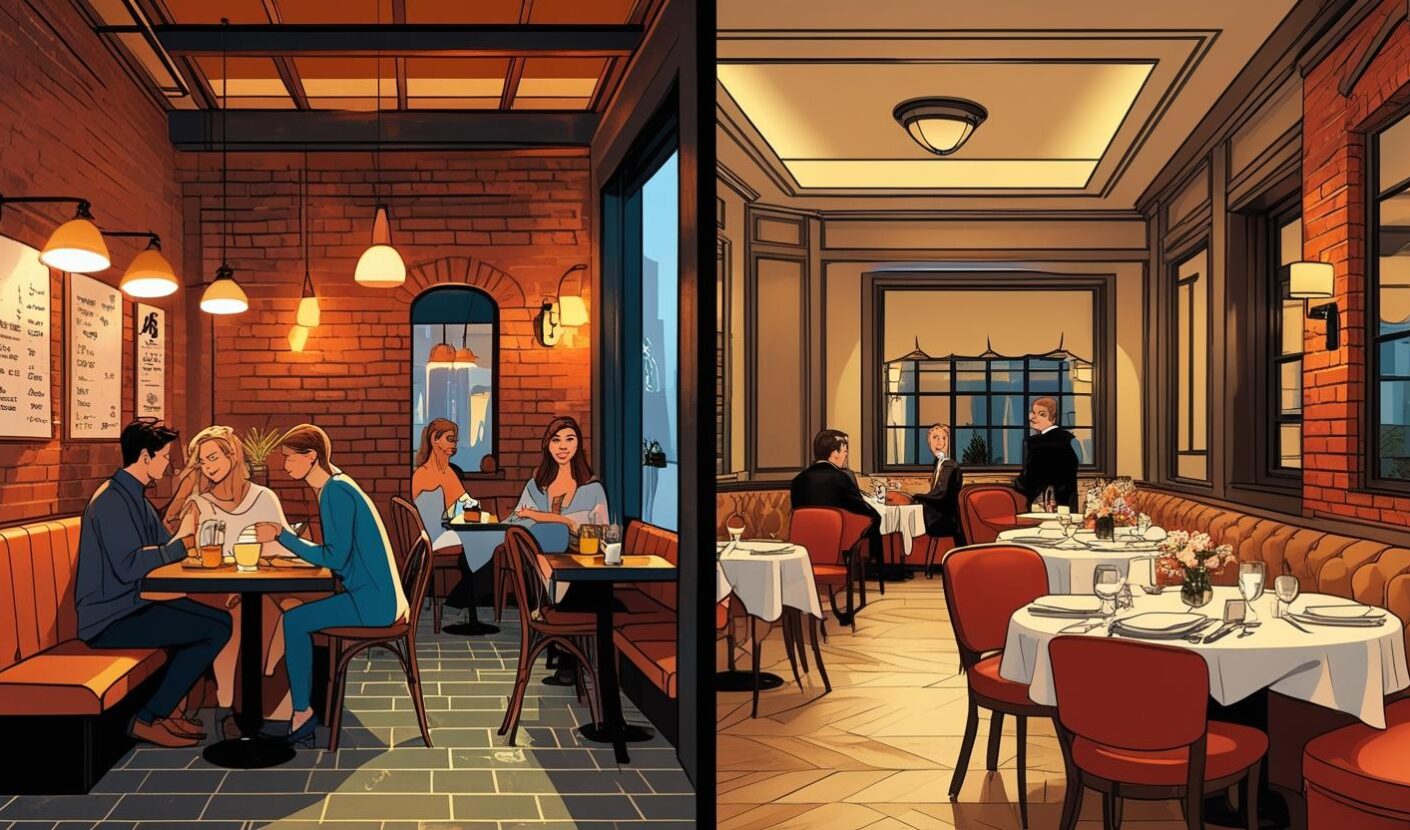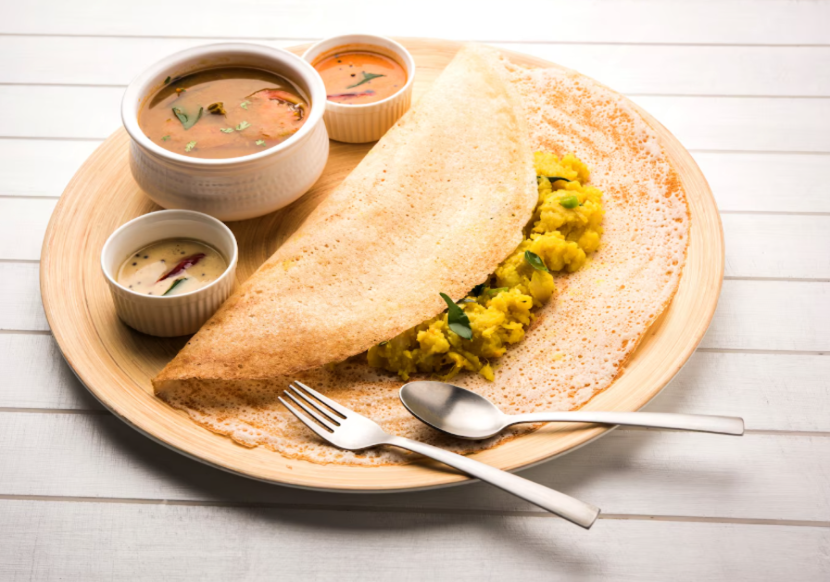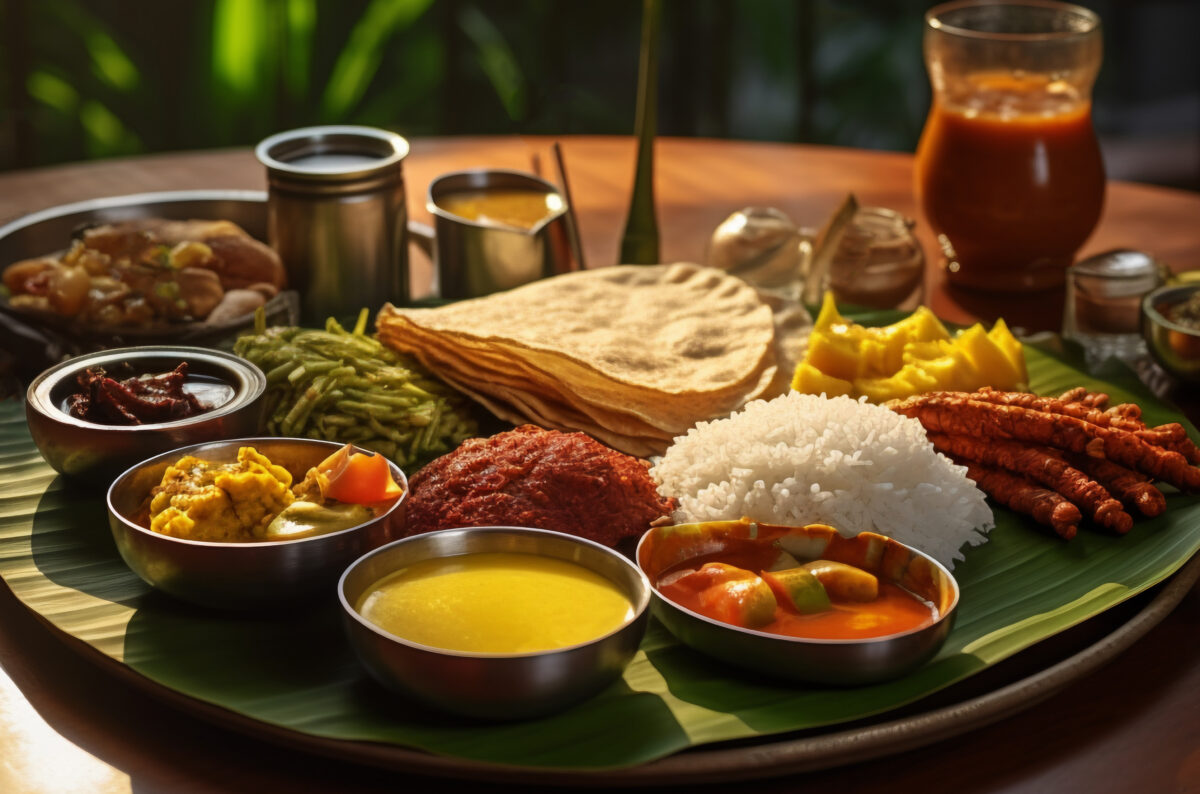
- July 31, 2025
Difference Between Cafe and Restaurant: Understanding the Key Distinctions
When it comes to choosing a place to eat or considering starting a food business, understanding the difference between cafe and restaurant is essential. At its core, the difference between cafe and restaurant revolves around the type of food served, the style of service, ambience, and overall dining experience. A café typically focuses on light beverages and snacks in a casual setting, whereas a restaurant offers full-course meals with formal table service in a more structured environment. This article will guide you through the essential features that set cafés and restaurants apart, helping you make informed decisions whether you are a customer, investor, or entrepreneur.
Recognizing the difference between cafe and restaurant not only enhances your dining choices but also sharpens your understanding of evolving F&B formats across the globe. If you have ever wondered what truly differentiates a café from a restaurant, this comprehensive guide, including a dining setup comparison, will answer all your questions.
The Origin Story: How History Shaped the Difference Between Cafe and Restaurant
To fully grasp the difference between cafe and restaurant, it’s helpful to understand their historical roots. Cafés originated during the Ottoman Empire, becoming social hubs centered around coffee drinking. These establishments spread throughout Europe, especially in Paris, where cafés evolved into informal meeting places for artists, writers, and intellectuals. The culture of cafés was built on casual conversation, light refreshments, and a welcoming atmosphere.
In contrast, the concept of a restaurant began in 18th-century France as a more formal dining establishment. Restaurants were created to serve elaborate meals to the elite and featured structured menus, multiple courses, and dedicated waitstaff. This led to the formal dining experiences we associate with restaurants today.
Over time, both cafés and restaurants have evolved, but the historical context still influences their fundamental differences. These origins help explain why the difference between cafe and restaurant lies not just in food but also in service, ambience, and social function—key aspects to understand in today’s diverse F&B formats.
Key Characteristics That Define a Café
The difference between cafe and restaurant is most evident when you examine their key characteristics. A café is designed for casual, informal visits, with a focus on relaxation and social interaction.
- Primary Focus on Beverages: Cafés specialize in coffee, tea, and specialty drinks. While some cafés offer limited food options, the emphasis remains on beverages.
- Light and Simple Food Offerings: Expect pastries, sandwiches, salads, and snacks rather than full meals.
- Casual Ambience: The atmosphere is cozy and laid-back, often featuring comfortable seating, free Wi-Fi, and background music to encourage long stays or work-from-café culture.
- Flexible Seating Arrangements: Commonly includes armchairs, communal tables, bar stools, or couches to suit solo visitors or groups.
- Service Style: Typically counter service or partial table service, where customers order at the counter and may collect their food themselves.
- Use Cases: Cafés are perfect for quick meetings, casual socializing, or working remotely.
Understanding these features clarifies the difference between cafe and restaurant and highlights why cafés attract a distinct audience looking for informal dining and social spaces.
Key Characteristics That Define a Restaurant
In contrast, the difference between cafe and restaurant becomes clear when looking at what defines a restaurant:
- Full-Service Dining: Restaurants serve complete meals including appetizers, main courses, desserts, and often a variety of beverages.
- Formal Service Model: Waitstaff attend to diners, take orders at the table, explain the menu, and provide a higher level of customer service.
- Structured Ambience: Restaurants often aim for a refined or themed atmosphere to create a memorable dining experience.
- Set Seating Arrangements: Tables are typically arranged for groups, couples, or families, with an emphasis on comfort and privacy.
- Operating Hours: Restaurants usually serve lunch and dinner, sometimes offering late-night service, accommodating longer visits.
- Use Cases: Ideal for celebrations, family dinners, business meetings, and formal outings where a full meal is expected.
These characteristics emphasize how the difference between cafe and restaurant extends well beyond food to include service and environment, offering a distinct experience tailored to different occasions and customer expectations. For tips on how to open a restaurant in India, check out our detailed guide.
Cafe vs Restaurant: Dining Setup Comparison
To further clarify the difference between cafe and restaurant, consider these comparative points:
- Menu Offerings:
- Café: Primarily light snacks, baked goods, and beverages.
- Restaurant: Full-course meals with appetizers, mains, desserts, and drinks.
- Café: Primarily light snacks, baked goods, and beverages.
- Service Style:
- Café: Counter or self-service, with occasional limited table service.
- Restaurant: Full table service with waitstaff attending guests.
- Café: Counter or self-service, with occasional limited table service.
- Ambience:
- Café: Cozy, informal, relaxed atmosphere.
- Restaurant: More formal, themed, or elegant settings.
- Café: Cozy, informal, relaxed atmosphere.
- Seating Arrangements:
- Café: Flexible seating like communal tables, sofas, and armchairs.
- Restaurant: Structured seating designed for groups and intimate dining.
- Café: Flexible seating like communal tables, sofas, and armchairs.
- Average Spend:
- Café: Low to moderate spending per visit.
- Restaurant: Moderate to high spending, reflecting full meals and service.
- Café: Low to moderate spending per visit.
- Alcohol Service:
- Café: Rarely serves alcohol.
- Restaurant: Often serves alcoholic beverages.
- Café: Rarely serves alcohol.
These points highlight the practical aspects of the difference between cafe and restaurant, assisting customers in choosing the right venue based on their dining needs. For insights on restaurant franchise costs in India, explore our blog.
Modern F&B Formats: Blurring the Lines Between Cafe and Restaurant
In today’s fast-paced food industry, the clear-cut difference between cafe and restaurant is becoming more nuanced. Innovative F&B formats are emerging that combine elements from both:
- Hybrid café-restaurants offer light snacks alongside full meals, catering to a wider audience.
- Coworking cafés blend workspace with food and beverage services, appealing to professionals and freelancers.
- Quick Service Restaurants (QSRs) incorporate dine-in options, blurring traditional boundaries.
The influence of technology and lifestyle changes also pushes these formats to evolve, with urban eateries offering brunch menus, specialty coffee, and evening dining all under one roof. These trends reflect the ongoing transformation in how the difference between cafe and restaurant is understood in contemporary dining culture. Learn more about the best food franchise in India to explore new opportunities.
Which One Should You Choose or Start?
If you’re an entrepreneur or investor wondering about the difference between cafe and restaurant in terms of business, here are some crucial decision-making factors:
- Budget Considerations: Starting a café generally requires a lower investment compared to a restaurant, which needs more infrastructure and staff.
- Location Matters: Urban metro areas often support trendy cafés popular with young professionals, while regional and suburban areas may lean towards family-friendly restaurants. See opportunities like the food franchise in Pune or South Indian food franchise in Mumbai.
- Target Audience: Define whether your customers prefer casual, quick bites or full dining experiences.
- Brand Vision: Clarify your long-term goals and the atmosphere you want to create.
In India, the café culture is booming in metropolitan cities, while traditional restaurants maintain dominance in smaller towns and regions. Knowing these market dynamics and exploring different F&B formats can help you position your business successfully.
Real-World Inspiration: Mysore Aduge – Tradition Meets Business Opportunity
If you’re inspired by the difference between cafe and restaurant and want to step into the F&B world, consider Mysore Aduge. This brand offers a unique opportunity for foodpreneurs interested in authentic South Indian vegetarian cuisine.
Mysore Aduge’s franchise model provides:
- Authentic, traditional recipes rooted in royal kitchens.
- Comprehensive training and marketing support.
- A chance to bring Mysore’s rich culinary heritage to your city.
This is more than just opening a restaurant or café; it’s about preserving culture and creating a profitable business. If you want to explore this opportunity, visit MysoreAduge.com or call +91 96860 22269 to join a legacy that blends tradition with modern entrepreneurship.
Conclusion
In summary, the difference between cafe and restaurant is multi-faceted, encompassing menu offerings, service styles, ambience, and customer expectations. Cafés provide casual, quick, and beverage-focused experiences, while restaurants offer formal, full-service meals suited for diverse occasions.
Whether you’re a diner seeking the right spot or an entrepreneur planning a new venture, understanding these distinctions is key. As dining habits evolve, innovative F&B formats continue to blur the lines between cafés and restaurants, creating exciting opportunities and experiences for all.
Frequently Asked Questions
A café primarily serves light beverages like coffee and tea along with snacks in a casual setting, while a restaurant offers full-course meals with formal table service and a more structured ambience.
Yes, many modern establishments combine elements of both to cater to a wider audience, offering light snacks and full meals.
Cafés often have counter or self-service models, whereas restaurants employ waitstaff for table service.
It depends on your budget, location, and target audience. Cafés usually require less investment and operate with simpler logistics.
Usually not, whereas many restaurants have a bar or serve alcoholic beverages.
Ambience plays a significant role; cafés are informal and relaxed, while restaurants tend to be more formal and designed for longer stays.
They blur traditional lines by incorporating hybrid models, making the distinction less rigid.
Yes, restaurants generally have higher average spends due to full-course meals and service, whereas cafés cater to lower to moderate spending.







